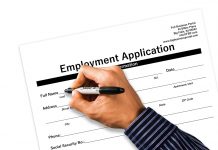
The Congressional Budget Office or CBO predicts that the unemployment rate in the US would not recover from the coronavirus pandemic quickly.
Based on the 10-year forecast of CBO, the unemployment rate may not recover for the next decade.
The economy was badly hit by the coronavirus outbreak and lockdown measures. CBO pointed out that even if economies are already reopening, the next decade will be a challenging one.
Moreover, CBO's prediction reflects uncertainty in terms of the coronavirus itself, shifting consumer preferences, and policy responses.
The CBO predicts the unemployment rate will stay above its pre-pandemic level until after 2030. The 10-year average unemployment rate is at 6.1%, up from 4.2% predicted in January.
US GDP
Meanwhile, US GDP is predicted to have an average 3.4% lower over the next decade than what was initially forecasted in January. GDP is only expected to grow in line with long-term trend growth again by 2028.
Based on April projections, this recession could further deepen the federal budget deficit in 2020, reaching $3.7 trillion.
Moreover, the CBO predicts the unemployment rate to reach its peak in the third quarter before declining fast in the last quarter of 2020 and throughout 2021.
According to the Bureau of Labor Statistics, a record 4.8 million jobs were produced in June, pushing the unemployment rate to 11.1%.
Nonfarm payrolls
There is some good news with nonfarm payrolls. Nonfarm payrolls increased by 4.8 million in June while unemployment rate fell to 11.1%, according to the Labor Department.
Economists polled by Dow Jones had been predicting a 2.9 million increase and an unemployment rate of 12.4%.
The record jobs gain was an improvement from the 2.7 million in May, which was altered by 190,000. The June total is considered the largest single-month gain in US history.
“Today’s announcement proves that our economy is roaring back. It’s coming back extremely strong,” President Donald Trump said in a news conference about an hour after the numbers were released. He pointed specifically to a sharp drop in the unemployment for Blacks that fell from 16.8% to 15.4%. “These are historic numbers.”
The figures reflect the activity in different states as they gradually reopen their economies. Wall Street gave a positive reaction to the report, with futures showing a more than 400-point gain at the open.
However, the report does not cover the suspension or rollbacks in places impacted by the resurgence in coronavirus cases.
“The 4.8 million rise in non-farm payrolls in June provides further confirmation that the initial economic rebound has been far faster than we and most others anticipated,” said Michael Pearce, senior U.S. economist at Capital Economics.
“But that still leaves employment 9.6% below its February level and with the spread of the virus accelerating again, we expect the recovery from here will be a lot bumpier and job gains far slower on average,” he added.
The US Labor Department explained that in a separate report that new unemployment claims are still up last week. The government received another 1.427 million filings, beyond the estimate of 1.38 million.
“This slowdown is going to have an impact, absolutely. How big is hard to say,” said Steve Blitz, chief U.S. economist at TS Lombard. “There are a lot of unknowns, and it would be silly on the fiscal side to pull back now on stimulus.”






